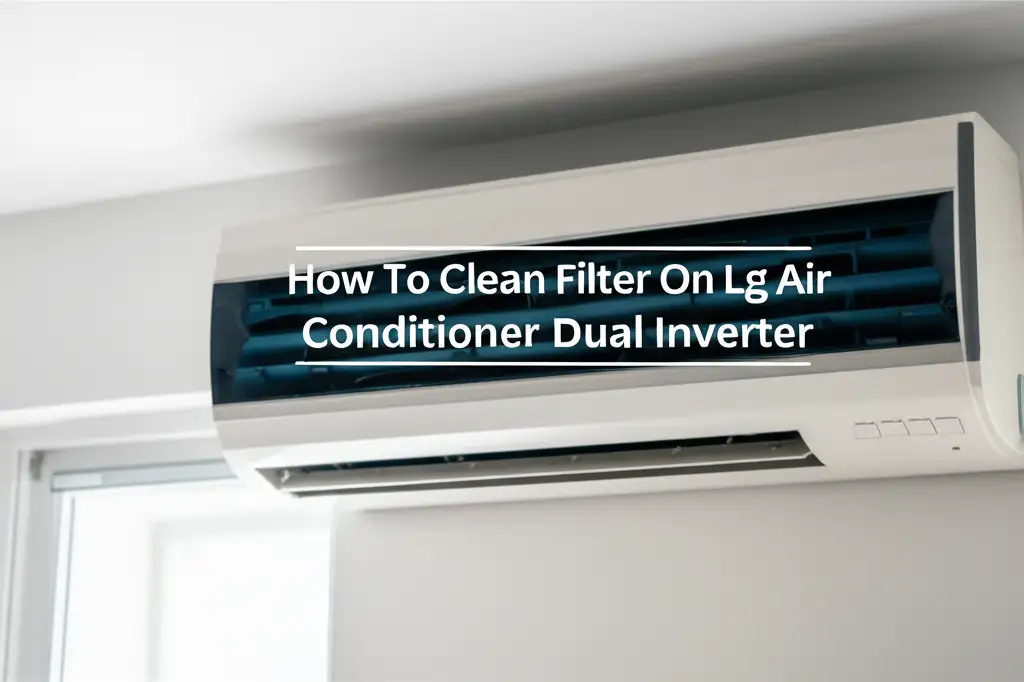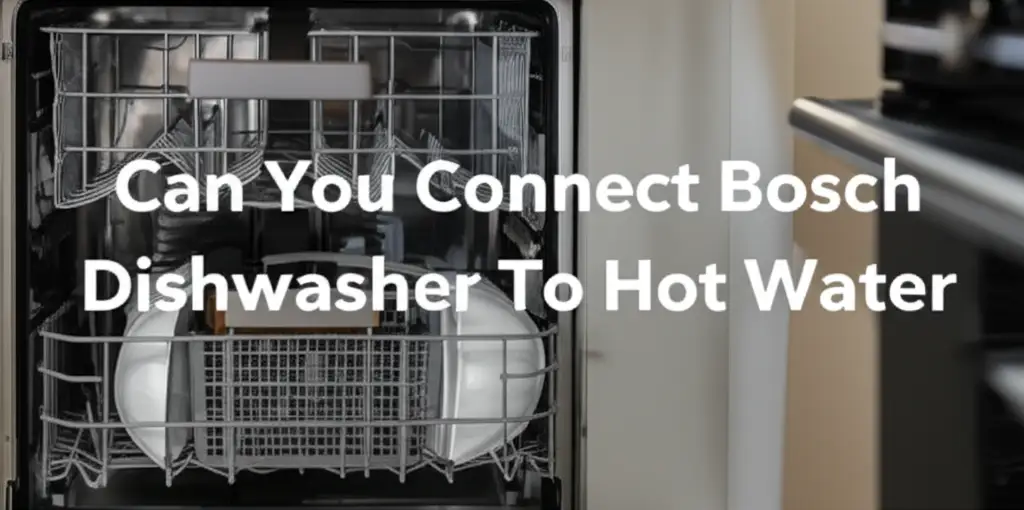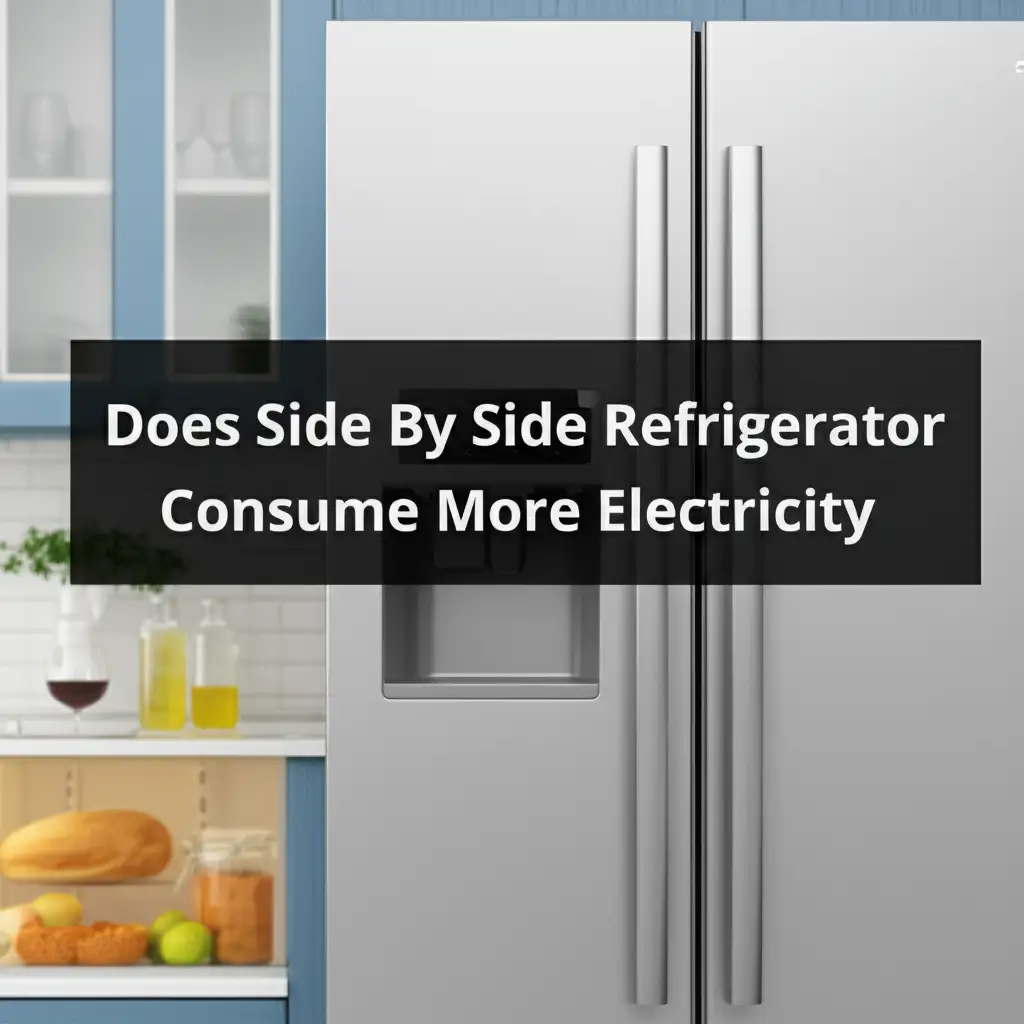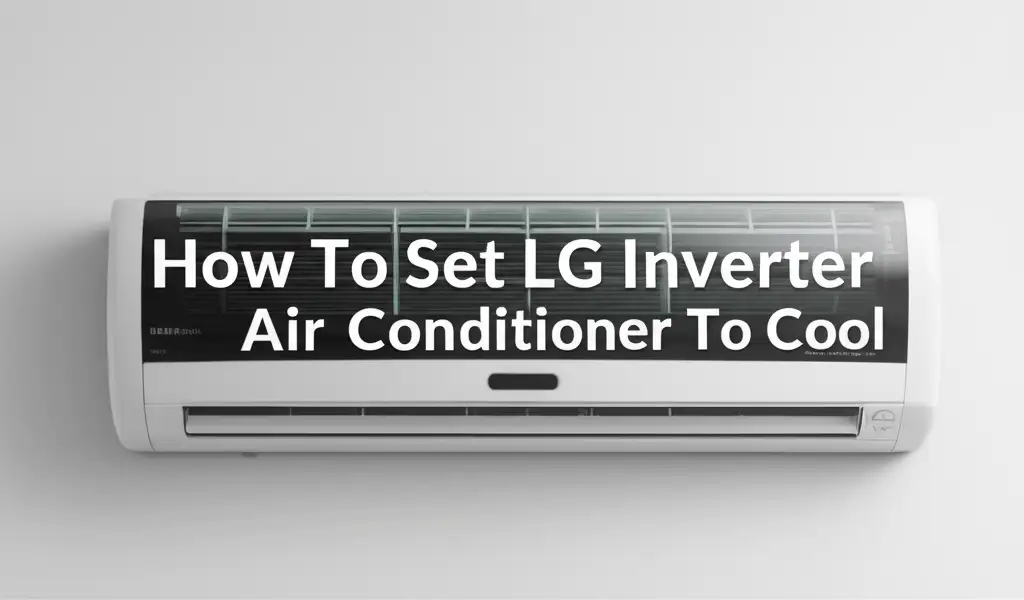· Todd Martin · Home Appliances · 18 min read
How Much Does Heat Pump Tumble Dryer Cost To Run
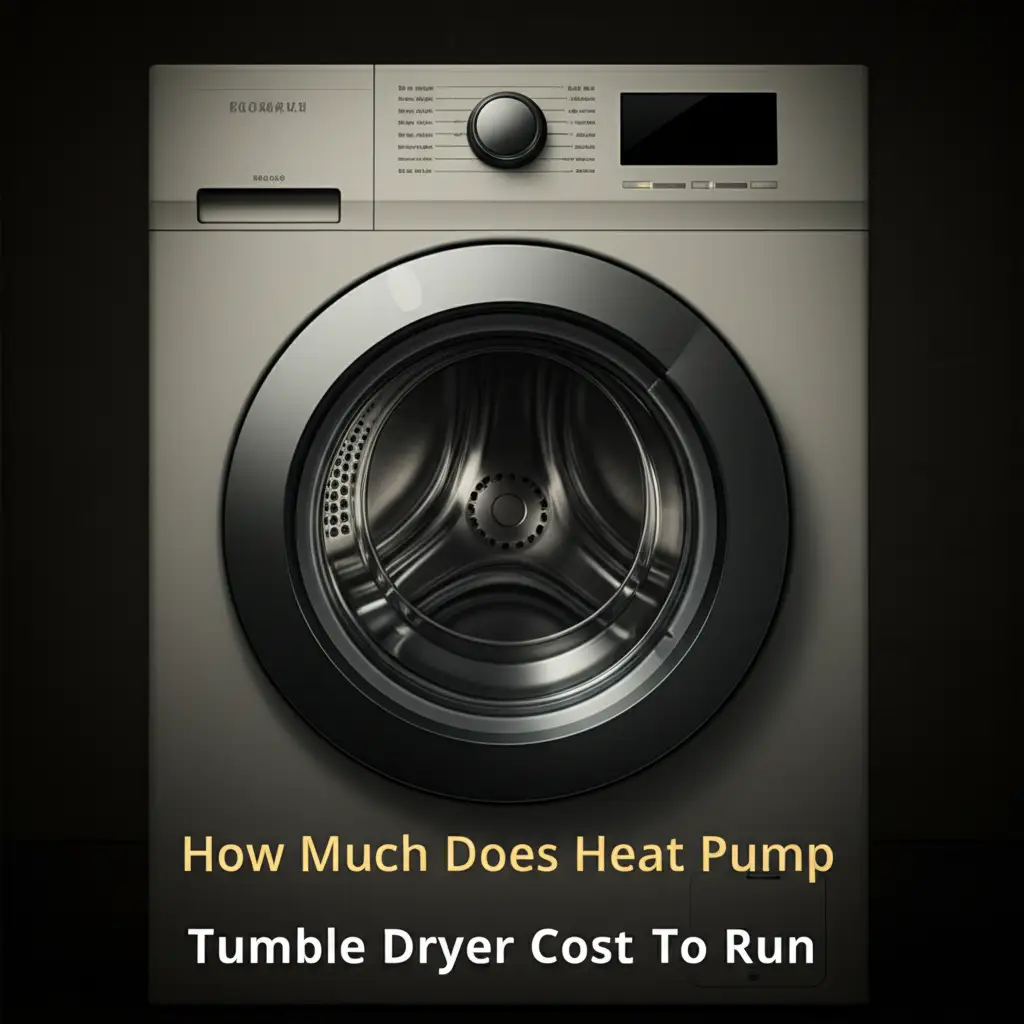
Save on Laundry: Heat Pump Tumble Dryer Running Costs Explained
Are your utility bills a constant worry, especially with a busy laundry schedule? Many people wonder about the real energy impact of their home appliances. Today, we will discuss a specific appliance: the heat pump tumble dryer. You are likely asking: “How much does a heat pump tumble dryer cost to run?” This question is important for your budget.
Heat pump tumble dryers are known for their efficiency. They use less electricity compared to older dryer types. This article will break down the true running costs. We will cover how they work, how to calculate costs, and smart ways to save even more. My goal is to help you understand your energy use and make smart choices for your home.
Takeaway:
- Heat pump tumble dryers use significantly less energy than traditional models.
- Calculate costs using kWh usage, energy tariff, and drying frequency.
- Regular maintenance and smart usage habits cut down on running expenses.
- The higher upfront cost often pays for itself through long-term energy savings.
A heat pump tumble dryer typically costs significantly less to run than traditional vented or condenser models. Its annual electricity cost can range from £25-£60, depending on your energy tariff, usage frequency, and the specific model’s efficiency, making it a very economical choice for drying clothes over time.
What Makes Heat Pump Dryers So Energy Efficient?
I often hear people ask why heat pump dryers are so special. The secret lies in their unique technology. These dryers do not release hot, moist air directly outside like vented models. They also do not use a separate heating element to warm new air for each cycle. This design makes them much more efficient.
Heat pump dryers work differently. They reuse hot air inside the drum. This closed-loop system saves a lot of energy. They pull moisture from your clothes and condense it into a water tank. The dryer then reheats and recirculates the same air. This process means less energy is needed to create heat. It is a smart way to dry clothes while using minimal electricity.
How Heat Pump Technology Works
Let me explain the basic process. A heat pump dryer operates much like a refrigerator, but in reverse. It uses a refrigerant to absorb heat from the air inside the drum. This warms the air. Then, this warm air flows through the wet clothes, picking up moisture.
Next, the humid air passes over an evaporator coil. This coil cools the air, causing the moisture to condense into water. The water then goes into a collection tank or drains away. The now-dry, cooler air goes back to the heat pump. The heat pump warms it up again for the next drying cycle. This continuous loop significantly cuts down on power consumption.
Energy Ratings and Their Meaning
When you buy a heat pump dryer, you will see an energy rating. This rating is usually an A+++ to D scale. A+++ is the most efficient. These ratings tell you how much energy the appliance uses. A higher rating means lower running costs.
I always recommend looking for the highest energy rating you can afford. An A+++ heat pump dryer uses very little electricity. It is an investment that pays off quickly in energy savings. Check the annual energy consumption label for a direct comparison between models. This number shows you the estimated kilowatt-hours (kWh) per year.
How to Calculate Your Heat Pump Tumble Dryer’s Running Cost
Calculating your dryer’s running cost is simpler than you might think. You need a few pieces of information. First, find out your dryer’s energy consumption. This is usually in kilowatt-hours (kWh) per cycle or per year. Second, know your electricity tariff. This is the price you pay per kWh of electricity.
Once you have these numbers, you can easily estimate your costs. Multiply the kWh used per cycle by your electricity rate. Then multiply that by how many cycles you run per week or year. This gives you a clear picture of your energy spending. It helps you budget better for your laundry needs.
Understanding kWh Usage
Every electrical appliance has a power rating. This is usually in watts (W). A typical heat pump dryer might use 0.5 to 1.5 kWh per cycle. This number depends on the model and the drying program. Look at your dryer’s specifications or energy label to find its exact consumption.
For example, if your dryer uses 0.8 kWh per cycle. If you run five cycles a week, that is 4 kWh per week. Over a year, this totals about 208 kWh. Knowing this kWh usage is crucial. It is the basis for all your cost calculations.
Your Electricity Tariff Matters
The price you pay for each kWh of electricity directly impacts your running cost. Electricity tariffs vary greatly. They differ by region, energy provider, and even time of day. Some tariffs offer cheaper electricity during off-peak hours. Always check your latest electricity bill to find your current rate.
Let’s say your electricity costs £0.30 per kWh. Using our previous example of 208 kWh per year, your annual cost would be £0.30 multiplied by 208 kWh. This comes to £62.40 per year. If your rate is lower, your cost will be lower too. Monitoring your tariff helps you understand your total laundry expenses.
Usage Frequency Impact
How often you use your heat pump tumble dryer makes a big difference to its running cost. Someone who does laundry daily will spend more than someone who does it once a week. This is common sense, but it is worth noting. More cycles mean more kWh consumed.
Consider your family’s laundry habits. A large family might run several loads every day. A single person might only run one or two loads a week. Adjust your calculations based on your actual usage. This provides the most accurate estimate for your household’s unique situation.
Heat Pump vs. Traditional Dryers: A Cost Comparison
Comparing heat pump dryers to traditional models highlights their economic advantage. Before heat pumps, most homes used vented or condenser dryers. While these dryers might have a lower upfront price, their running costs are much higher. This makes heat pump models a smart long-term choice.
I want to show you the significant savings you can achieve. Understanding this comparison helps you justify the initial investment. It shows you the true value of heat pump technology. Over time, the difference in your energy bill becomes very clear.
Vented Dryers: High Energy Use
Vented dryers are the simplest type. They heat air with an electric heating element and blow it through clothes. This hot, moist air is then vented outside through a hose. This continuous expulsion of heated air means a constant need to heat new air. This process uses a lot of electricity.
On average, a vented dryer can use between 2.5 to 4.5 kWh per cycle. If you run five loads a week at £0.30/kWh and 3.5 kWh/cycle, that is £5.25 per week, or £273 per year. Compare this to the heat pump dryer’s ~£60 annual cost. The difference is substantial. Vented dryers are energy hogs.
Condenser Dryers: Better, But Still Less Efficient
Condenser dryers are an improvement over vented models. They do not need an external vent. Instead, they cool the hot, moist air inside the dryer. This causes the moisture to condense into a water tank. The air is then reheated and reused. This system is more efficient than vented models.
However, condenser dryers still use a separate heating element. This element consumes significant electricity. A typical condenser dryer might use 2 to 3.5 kWh per cycle. So, five loads a week at £0.30/kWh and 2.5 kWh/cycle would be £3.75 per week, or £195 per year. While better than vented, they still cannot match the efficiency of a heat pump dryer.
Long-Term Savings Overview
The long-term savings with a heat pump tumble dryer are truly impressive. Over the lifespan of the appliance, which is typically 10-13 years, the energy savings add up. Let’s assume an average annual saving of £150-£200 compared to a traditional dryer. Over ten years, this could be £1,500-£2,000.
This saving often outweighs the higher upfront cost of a heat pump model. You spend more initially, but you recoup that money through lower utility bills. For many households, this makes a heat pump dryer a wise financial decision. It is an investment in energy efficiency and long-term cost reduction.
Key Factors Influencing Your Dryer’s Energy Bill
Several factors influence the actual energy consumption of your heat pump tumble dryer. It is not just about the model’s energy rating. Your specific usage habits, the type of laundry you dry, and even the environment around the dryer play a role. Understanding these factors helps you optimize your dryer’s performance and manage costs.
I want to highlight these elements so you can make informed decisions. Small changes in how you operate your dryer can lead to noticeable savings on your electricity bill. Every little bit helps. Pay attention to these details to keep your running costs low.
Load Size and Fabric Type
The size of your laundry load affects energy use. An overloaded dryer takes longer to dry clothes. This uses more electricity per cycle. Conversely, very small loads can also be inefficient. The dryer still needs to heat its internal air volume. Aim for full, but not overstuffed, loads.
Different fabric types also impact drying time and energy. Heavy fabrics like denim or towels hold more water. They require longer drying cycles. Lighter materials like synthetics dry faster. Sorting your laundry by fabric type can help. Dry similar items together to optimize cycle times.
Dryer Settings and Sensor Technology
Modern heat pump dryers come with various settings. Using the right setting for your load is important. For example, some models have “eco” or “low heat” settings. These settings use less energy, though they might take longer. Choosing these options can save you money.
Many heat pump dryers have sensor technology. This technology detects moisture levels in the clothes. The dryer stops automatically when clothes are dry. This prevents over-drying, which wastes electricity. Always use these sensor-dry programs. They are far more efficient than timed drying.
Environmental Conditions
The environment where your dryer is located can affect its efficiency. Heat pump dryers work best in moderate temperatures. If the room is too cold, the heat pump has to work harder to generate heat. This uses more electricity. Avoid placing the dryer in very cold garages or unheated basements.
Good air circulation around the dryer is also beneficial. Ensure the condenser coils and air vents are not blocked. Proper airflow helps the dryer operate efficiently. This small detail can contribute to lower running costs. Also, consider if you can put a heat pump dryer on top of a washing machine for space saving, but ensure proper ventilation is still maintained.
Smart Strategies to Reduce Your Heat Pump Dryer Costs
You can do many things to further reduce your heat pump tumble dryer’s running costs. These strategies involve good laundry habits and simple maintenance. Implementing these tips helps your dryer work at peak efficiency. This keeps your energy bills as low as possible.
I have found these tips to be very effective. They are easy to incorporate into your routine. By following these suggestions, you will maximize your savings. My aim is to help you get the most value from your energy-efficient appliance.
Pre-Spinning Clothes
Before putting clothes into the dryer, make sure they are spun thoroughly in your washing machine. A high-speed spin cycle removes more water from the clothes. This means the dryer has less work to do. Less moisture means shorter drying times and less electricity used.
A washing machine’s spin cycle is generally more energy-efficient for water removal than a dryer’s heating process. So, always use the fastest spin speed suitable for your laundry. This simple step can save significant energy over time. It is an easy way to prepare your clothes for efficient drying.
Regular Maintenance for Efficiency
Maintaining your heat pump tumble dryer is crucial for its efficiency and longevity. Two key areas need regular attention: the lint filter and the condenser/evaporator coils. A clogged lint filter restricts airflow, making the dryer work harder. Clean the lint filter after every single load. This small action keeps air flowing freely.
The condenser and evaporator coils can accumulate lint and dust over time. This build-up reduces the dryer’s ability to transfer heat efficiently. Refer to your dryer’s manual for specific cleaning instructions. Many heat pump dryers have self-cleaning condensers, but you might need to manually clean the evaporator coils or other filters. Cleaning the coils is a vital step in maintaining efficiency. You can learn more about how to clean heat pump coils to ensure optimal performance. My experience tells me that neglected filters are a major cause of increased energy use. Regular cleaning, including knowing how to clean your dryer comprehensively, prevents unnecessary energy waste.
Optimizing Load Management
Loading your dryer correctly is important. Do not overload it. An overloaded dryer traps moisture and hot air. This prevents clothes from tumbling freely and drying efficiently. Clothes will take much longer to dry, wasting energy.
Also, do not underload the dryer. Running a large appliance for only a few items is inefficient. Try to wait until you have a full load before running the dryer. If you only have a few items, consider air drying them. Batching your laundry saves both energy and time.
Understanding the Upfront Cost vs. Long-Term Savings
When considering a heat pump tumble dryer, the initial purchase price can seem high. These models often cost more than traditional vented or condenser dryers. This upfront cost can be a barrier for some people. However, it is important to look beyond this initial expense.
I always advise people to consider the total cost of ownership. This includes the purchase price plus the running costs over the appliance’s lifespan. When you factor in the significant energy savings, the heat pump dryer often becomes the more economical choice in the long run. It is an investment that provides returns.
Initial Purchase Price
Heat pump tumble dryers typically range from £400 to over £1,000. This price range is higher than that of vented dryers, which can start around £200-£300, or condenser dryers, often from £300-£600. The advanced technology and components in heat pump models account for this difference.
This higher price reflects their sophisticated heat pump system. It also covers the durable materials often used. While the sticker price is higher, remember that you are buying a product designed for superior energy efficiency. This efficiency is where your long-term savings begin.
Payback Period Estimation
The payback period is the time it takes for your energy savings to offset the higher purchase price. This period varies based on your usage habits and electricity costs. For example, if a heat pump dryer costs £200 more than a condenser dryer but saves you £150 per year on electricity, your payback period is about 1.3 years.
After this payback period, every year of operation means pure savings on your utility bills. Many people find this payback period surprisingly short. This makes the heat pump dryer a sound financial decision for most households over its lifespan. You essentially get free drying after the savings pay for the initial difference.
Environmental Benefits
Beyond the financial savings, there are important environmental benefits. Heat pump tumble dryers use significantly less energy. This means they contribute less to carbon emissions. Choosing an energy-efficient appliance reduces your carbon footprint.
My experience shows many people today care about their environmental impact. Investing in a heat pump dryer helps the planet. It is a choice that benefits both your wallet and the environment. This makes it a responsible decision for modern homes.
Common Myths and Realities of Heat Pump Dryers
There are many misconceptions about heat pump tumble dryers. Some people think they take too long to dry clothes. Others worry about their complexity or repair costs. I want to address these common myths. Understanding the facts helps you make an informed decision.
My goal is to clear up any confusion. Heat pump dryers are advanced appliances, but they are designed for everyday use. Let me share the realities based on how these machines actually work. This will give you a clearer picture of their benefits and any potential drawbacks.
Myth 1: Heat Pump Dryers Take Too Long
Many people believe heat pump dryers take forever to dry clothes. It is true that they can take slightly longer than traditional vented dryers. This is because they use lower heat settings. They dry clothes more gently, which protects fabrics.
However, the difference in drying time is often exaggerated. For many loads, the extra time is minimal. Modern heat pump dryers use sensor technology to optimize drying cycles. They are not always significantly slower for common loads. The energy savings easily outweigh this small time difference.
Myth 2: They Are Too Complex to Maintain
Another myth is that heat pump dryers are difficult to maintain. This is not true. Their maintenance is straightforward. The main tasks are regular lint filter cleaning and occasional condenser or heat exchanger cleaning. Many models have self-cleaning condensers, which makes it even easier.
The overall maintenance requirements are similar to other dryers. You just need to know where the filters and condensers are located. Following the manufacturer’s instructions ensures your dryer runs efficiently for years. Simple care keeps your appliance working its best.
Myth 3: Heat Pump Dryers Are Always More Expensive
While the upfront cost is higher, saying they are “always” more expensive is a myth. As discussed, the long-term running costs are much lower. This means the total cost of ownership is often less over the dryer’s lifespan. You save money on electricity bills every single month.
The initial investment pays for itself. Then, the savings become pure profit for your household budget. It is essential to look at the big picture. Do not let the sticker price deter you from a very cost-effective appliance in the long run.
Myth 4: They Don’t Dry Clothes As Well
Some people worry that clothes dried in a heat pump dryer will not be as dry or fresh. This is incorrect. Heat pump dryers effectively dry clothes. They achieve the same level of dryness as traditional dryers. In fact, the lower heat can be better for clothes, causing less wear and tear.
The dryness level depends on the cycle chosen and the sensor accuracy. Your clothes will come out perfectly dry and ready to wear or put away. The process is simply more energy-efficient and gentler on fabrics. Your laundry will feel just as fresh.
FAQ Section
How much electricity does a heat pump dryer use per load?
A typical heat pump dryer uses between 0.5 to 1.5 kilowatt-hours (kWh) per load. This figure depends on the model, load size, and chosen drying program. For example, an eco-friendly setting will use less. Knowing this helps you estimate individual cycle costs based on your electricity tariff.
Are heat pump dryers worth the extra cost?
Yes, heat pump dryers are generally worth the extra upfront cost. Their high energy efficiency leads to significant savings on electricity bills over time. These savings often offset the initial higher purchase price within a few years. They also offer gentler drying and environmental benefits.
What is the average lifespan of a heat pump tumble dryer?
The average lifespan of a heat pump tumble dryer is typically between 10 to 13 years. This can vary based on the brand, usage frequency, and how well you maintain the appliance. Regular cleaning of filters and coils helps extend its operational life.
Do heat pump dryers take longer to dry clothes?
Heat pump dryers can take slightly longer to dry clothes compared to conventional vented or condenser dryers. This is because they operate at lower temperatures. However, this gentler drying protects fabrics. Modern models with sensor technology minimize any noticeable difference for most users.
How much can I save with a heat pump dryer annually?
You can save a significant amount with a heat pump dryer annually. Compared to a standard condenser or vented dryer, typical savings range from £100 to £200 per year, depending on your usage and electricity prices. Over the appliance’s lifespan, these savings add up to thousands of pounds.
What is the best way to clean a heat pump dryer for efficiency?
The best way to clean a heat pump dryer for efficiency is by regularly emptying the lint filter after every load. Additionally, periodically clean the condenser unit and any accessible evaporator coils or filters as per your manufacturer’s manual. This prevents airflow restriction and maintains optimal performance.
Conclusion
Understanding the running cost of a heat pump tumble dryer is essential for modern households. We have seen that these appliances offer remarkable energy efficiency. They use a closed-loop system to reuse heated air, drastically cutting down on electricity consumption. This makes their long-term running costs significantly lower than traditional vented or condenser dryers.
You can calculate your specific costs by knowing your dryer’s kWh usage and your electricity tariff. Remember, factors like load size, dryer settings, and even room temperature impact consumption. By implementing smart strategies like pre-spinning clothes, performing regular maintenance, and optimizing load management, you can maximize your savings.
While the initial investment for a heat pump tumble dryer might be higher, the substantial energy savings quickly pay back this difference. This makes them a wise financial and environmental choice. Ready to make a smart switch or optimize your current heat pump dryer use? Start by checking your energy label and adopting these simple tips to lower your laundry expenses today.


